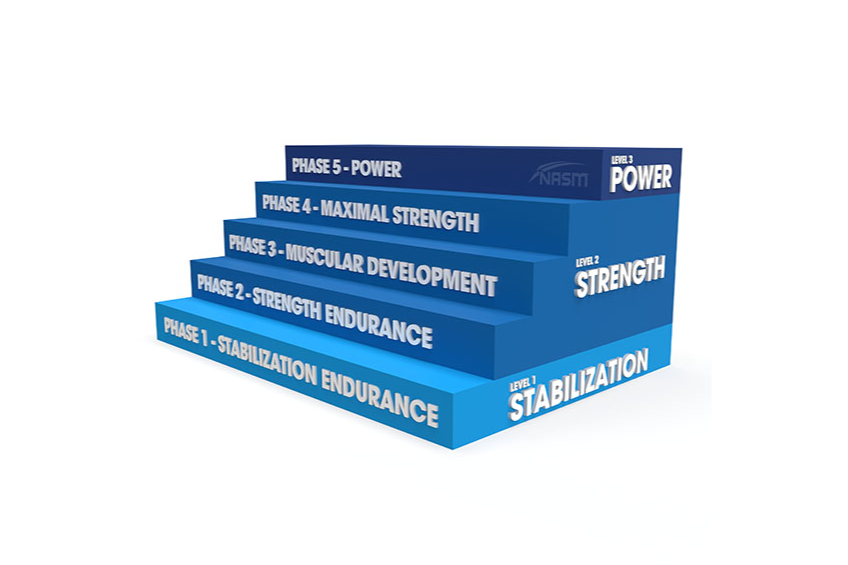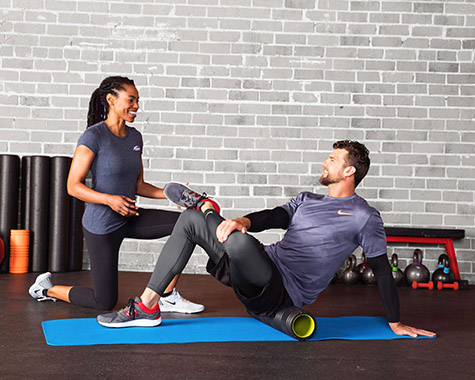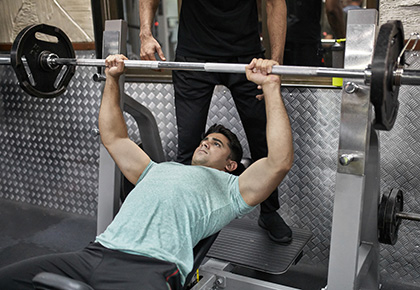The Optimum Performance Training® Model
What is The OPT™ Model?
Utilized for over 20 years with the world's top athletes, the NASM OPT™ Model, or Optimum Performance Training® Model, is a fitness training system developed by Dr. Mike Clark. Based on scientific evidence and principles, the model is highly adaptable and versatile in its application, progressing individuals through five distinct yet complementary training phases. As a NASM-CPT, the OPT™ Model is the most powerful tool you have at your disposal.

Level 1 (Phase 1)
Phase 1: Stabilization & Endurance
Stabilization Endurance is the foundation of the entire OPT™ Model. During this first phase, clients will perform 12-20 repetitions per set, their movement speeds will slow down, and the intensity/weight used for exercises reduced to promote muscular endurance and ensure correct form and technique.
Reinforcing correct movements in this phase can lead to strength gains — yes, even with lighter weights — because of enhanced joint and postural control, and coordination. When progressing client programs in this phase, a primary focus is on increasing proprioceptive demand (controlled instability) of the exercises, rather than just increasing the amount of weight the client uses.
Phase 1 is a great starting point for new training clients and is an opportune time to do questionnaires and fitness assessments to determine goals, establish baselines for training, and identify any movement compensations, respectively. And, for more experienced clients, Stabilization Endurance is a great phase to include in their program to add different stresses and challenges to the body and will also become a critical phase to cycle back through between training periods in the other phases.

Level 2 (Phases 2-4)
Phase 2: Strength Endurance
NASM Master Instructor Ken Miller calls Phase 2 the “gateway phase” because it gives clients the chance to acclimate to heavier weights and higher training intensities. Workouts in the Strength Endurance Phase use superset techniques—in which a client will follow a more traditional strength exercise (such as a bench press) with an exercise that has similar biomechanical motions but requires more stabilization to perform (like a stability ball push-up).
This phase is the logical next step from Phase 1 for increasing the intensity of clients’ workouts. Sets increase to 2-4, repetitions will stay high (8-12 per exercise / 16-24 per superset). The supersets combined with decreased rest periods will elevate the challenge considerably—leading not only to noticeable improvements in strength and endurance but more significant calorie expenditure for clients too.

Phase 3: Muscular Development/Hypertrophy
Phase 3 of the OPT™ Model is all about building strength and developing muscle. Muscular Development/Hypertrophy training is ideal for the adaptation of maximal muscle growth, by focusing on higher volumes of work at moderate-to-high intensity levels and with minimal rest periods between exercise sets. These training variables contribute to cellular changes that result in an overall increase in muscle size.
If caloric intake is appropriate, the increased intensities and training volumes, and decreased rest periods experienced in this phase also make it great for clients who aspire to change their body composition through fat/weight loss.
Typically, workouts in this phase involve performing 3-6 sets of 6-12 reps per resistance exercise at intensities ranging from 75-85% of a client’s one-rep max.
To calculate one-rep maxes, check out this one-rep-max calculator.

Phase 4: Maximal Strength
Phase 4 is geared towards enhancing clients’ abilities to produce maximal muscular force. Accomplishing this requires maximal efforts and lifting near-max/maximal loads during resistance training—ranging anywhere from 85-100% of a client’s one-rep max—for 1-5 repetitions.
While similar to Muscular Development training in scope, developing maximal strength largely depends on neuromuscular adaptations resulting from consistently and progressively overloading muscles with higher intensities (loads). Because clients will be lifting so heavy in this phase, longer rest periods between exercise sets and higher volumes of training are usually required to optimize strength gains.

Level 3 (Phase 5)
Phase 5: Power
The 5th phase of the OPT™ Model focuses on using high force and high velocity exercises to increase power. One method to improve power is to perform supersets with contrasting loads. Like the supersets outlined and used in Phase 2 of the OPT™ Model, supersets in this phase will consist of two biomechanically similar exercises performed back-to-back—the first exercise should challenge near-max/maximal strength for 1-5 reps, and the second exercise should involve and challenge moving relatively low loads as fast and explosively as possible for 8-10 reps.
The rationale for this sequence is to activate and tap into as many muscle fibers as possible with the maximal lift, while utilizing explosive exercises directly after to improve how quickly and efficiently those muscle fibers contract. Keeping with the upper body exercise theme used previously, an example Phase 5 superset is performing a bench press followed by a medicine ball chest pass.
It is important to note, though, the benefits of power training extend beyond those seeking to improve athletic performance and is appropriate for the traditional client and non-athlete too. Phase 5 can be easily modified for any client. And when strategically used, the power phase can not only yield great results and challenging experiences for clients, but also be a differentiator for fitness, Strength and Conditioning, and Sports Medicine professionals—as well as Sport Coaches—looking to incorporate fun, innovative, and proven methods to get the most out of the individuals they work with.
Note: Originally, there was a 6th phase of the OPT™ Model - Maximal Power - but the experts at NASM developed that into the Performance Enhancement Specialization. Follow the link for more information on Maximal Power.
To learn how to become master of using the OPT™ model in your personal training, see the:
